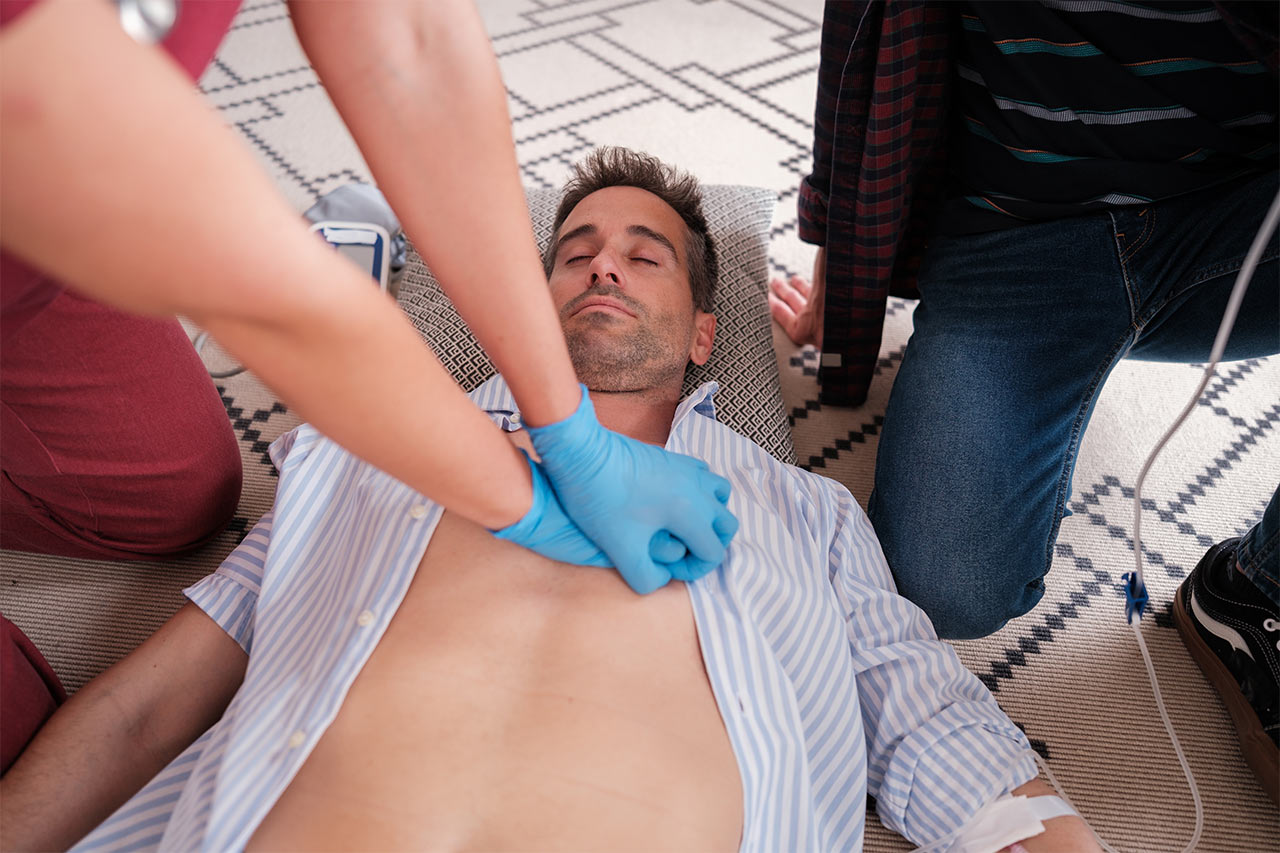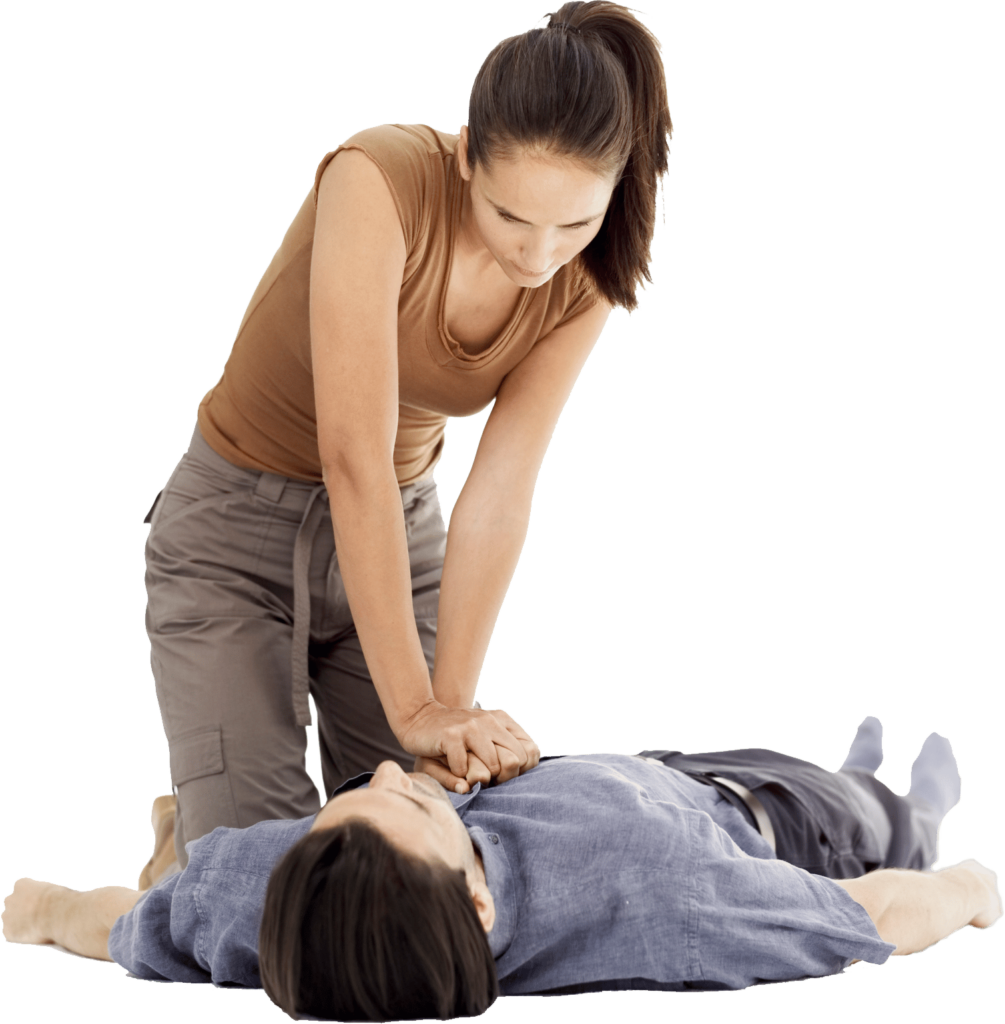

Being prepared to help in emergencies can save lives. Basic Life Support, or BLS, is a set of skills that includes CPR and the use of an AED. BLS is crucial in emergencies to keep blood and oxygen moving through the body until professional help arrives. This training is valuable for everyone, from healthcare professionals and teachers to parents and everyday people.
Understanding how to perform CPR and use an AED on adults, kids, and babies can be life-changing. Each age group requires a different approach, and knowing these differences ensures that the assistance provided is both effective and safe. Consistency in these life-saving techniques is essential to maintain the right rhythm and depth of compressions, which can significantly impact the victim’s chances of recovery.
Our training classes cover these critical skills and provide certification recognized everywhere. Knowing proper BLS techniques can make anyone more confident in handling emergencies, whether at home, work or in the community. Familiarity with these methods means being ready to act when it matters most, potentially saving someone’s life.
Basic Life Support (BLS) is a critical set of skills that includes performing chest compressions and rescue breaths, as well as using an Automated External Defibrillator (AED). BLS is essential because it helps maintain blood flow and oxygen supply to vital organs when someone’s heart or breathing has stopped. This immediate intervention can save lives by sustaining a victim until professional medical help arrives.
We know that emergencies can happen anywhere, at any time. Having BLS training means being prepared to act quickly and effectively in those first crucial minutes. Whether you are a healthcare professional, educator, parent, or an everyday person, BLS skills empower you to handle emergencies involving cardiac arrest or choking. Knowing how to perform BLS can make us confident and capable of helping save lives, turning bystanders into heroes.
Performing CPR on adults, kids, and babies involves different techniques due to the varying sizes and physiologies of each age group. Adults typically use both hands for chest compressions, pressing down hard and fast in the middle of the chest to achieve the right depth and rhythm. This ensures that the blood keeps circulating effectively to the vital organs.
For kids, particularly those who have not yet reached puberty, we use one hand for chest compressions. The force applied is gentler than on adults but still strong enough to circulate blood. Babies require even more delicate handling. We use two fingers for chest compressions, making sure to press down gently but effectively. The goal is to provide the necessary support without causing harm.
Knowing these differences is crucial for anyone who might find themselves in a situation requiring CPR. Properly trained individuals help reduce the risk of injury while maximizing the chances of a successful resuscitation, ensuring that each group receives the care they need.
Automated External Defibrillators (AEDs) are critical devices in Basic Life Support. These portable machines are designed to assess heart rhythms and provide an electric shock to restore a normal heartbeat during sudden cardiac arrest. Using an AED can greatly increase the chances of survival, and knowing how to operate one is a vital part of BLS training.
AEDs are designed to be user-friendly, with clear voice instructions that guide us through each step. For adults, the process is sometimes straightforward. For children and infants, special pediatric pads or settings are used to ensure the shock is appropriate for their smaller bodies. This adaptability makes AEDs an essential part of life-saving efforts for people of all ages. Basic Life Support training includes instructions on how to use AEDs effectively, ensuring that we can act quickly and confidently in emergencies.
Getting BLS CPR certified in Dallas has several key benefits. First and foremost, certification makes us capable of handling cardiac emergencies effectively and safely. The skills we learn can mean the difference between life and death in critical situations.
In our BLS CPR classes, we cover techniques for performing CPR on adults, children, and infants, as well as the correct usage of AEDs. Our certification is approved by recognized bodies, ensuring our training meets high standards. We also offer convenient class schedules, including evening and weekend sessions, to fit our busy lives. Certification is valid for two years, giving us lasting peace of mind knowing we’re prepared for emergencies.
Get Certified in Basic Life Support in Dallas: Be Ready to Save Lives
Basic Life Support (BLS) training is an invaluable skill set that empowers us to save lives in emergencies. Knowing how to perform CPR on adults, kids, and infants, as well as how to use an AED effectively, ensures we can provide the best possible care in critical moments. Our BLS CPR certification classes in Dallas offer comprehensive training that makes us confident and capable in life-saving situations.
Whether we are healthcare professionals, teachers, parents, or simply individuals who want to be prepared, BLS certification is a worthwhile investment in our ability to help those in need. Join us at Rapid CPR Dallas and become certified in Basic Life Support. Gain the skills and confidence to make a difference when it matters most. Don’t wait—enroll in our next class today and be prepared to save lives.

